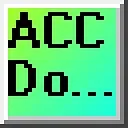Free PLC Programming: Learn with Do-More Designer Simulator
7K views
Aug 20, 2024
Discover how to program PLCs for free using the Do-More Designer simulator. This video series covers software installation, ladder logic programming, documentation, start-stop-jog circuits, memory retention, numbering systems, timers, and counters. Perfect for beginners looking to start their PLC programming journey without investing in hardware.
View Video Transcript
0:00
Learn how to program PLCs for free without any physical hardware
0:03
The Do-more Designer Simulator offers a fully functional free solution for mastering programmable
0:09
logic controller programming. This powerful software not only allows you to write and
0:14
test ladder logic programs, but also simulates communication through Ethernet and serial ports
0:20
helping you understand HMI and communication protocols. Our comprehensive video series guides you through the basics of installing the software
0:29
programming, and testing your ladder logic programs. Although initially released six years ago, the content remains relevant and serves as an excellent starting point for PLC beginners
0:40
Let's explore the key topics covered in each video of this series
0:43
Video one focuses on installing the Do-more Designer software. You'll learn how to download, unzip, install, and launch this award-winning PLC programming tool
0:53
In the second video, you'll create your first PLC program. This includes writing simple ladder logic to create inputs and activate outputs
1:02
You'll also learn how to use the simulator to test your code before implementing it on actual
1:07
hardware. The third video emphasizes the critical importance of program documentation. Proper
1:14
documentation saves time and money by helping you understand your code's purpose long after
1:20
it's written. Video four introduces the start, stop, and jog circuit, a fundamental component
1:26
in many PLC applications. You'll explore conventional circuits and learn about set
1:32
and reset instructions. The fifth video builds on the previous one, discussing memory retention in
1:37
PLCs. You'll learn how to make your start, stop, and jog circuits remember their state even after
1:44
power loss. In video six, we delve into numbering systems used in PLCs, explaining decimal
1:51
hexadecimal, and binary representations. The seventh video expands on numbering systems, focusing on how PLCs interpret binary data, and discussing BCD, hex, and ASCII systems
2:04
Video eight unveils the secrets of PLC timers, teaching you how to read and implement timing
2:10
charts in your programs. The ninth video covers PLC counters, another essential component in many
2:16
automation applications. You'll learn how to use timing charts to implement counters effectively
2:22
This series provides a solid foundation for PLC programming without any financial investment
2:28
It helps you determine if PLC programming aligns with your interests and career goals
2:33
To get started, download the free Do-more Designer software from the AutomationDirect website
2:38
This full-featured programming tool supports both stage and ladder logic, offering a flexible approach to PLC programming. The software includes built-in tutorial videos
2:48
a virtual PLC simulator, and powerful features like intuitive math operations, high-speed I.O. capabilities, and data logging functionalities. For more in-depth information
3:00
on PLC programming, consider exploring the PLC Beginner's Guide to PLC Programming
3:06
Remember, mastering PLC programming takes time and practice, but with these free resources
3:11
you're well on your way to becoming proficient in this valuable skill
#Factory Automation
#Manufacturing
#Programming

